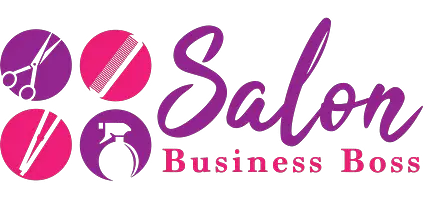Running a commission-based salon can be a rewarding venture for both salon owners and hairstylists. It offers a performance-driven model where stylists are compensated based on their productivity, while salon owners benefit from reduced fixed costs. However, managing a commission-based salon requires careful planning, effective communication, and strategic promotion.
To run a commission-based salon successfully, understand the business model, set clear expectations for stylists, attract top talent, build a strong client base, and embrace technology for streamlined operations. Nurture a positive work environment and offer performance incentives to motivate stylists. Implement effective promotion strategies to ensure continuous growth and success.
1. Understanding the Commission Business Model:
In a commission-based salon, the business model revolves around compensating hairstylists based on the revenue they generate through services and retail sales. This means that instead of receiving a fixed salary, stylists earn a percentage of the money brought in by their efforts. The commission percentage may vary depending on factors such as experience, performance, and tenure within the salon.
For salon owners, it is crucial to thoroughly comprehend the financial implications of this model and analyze its feasibility for their specific business. Understanding profit margins, calculating costs, and predicting revenue based on stylist performance are essential aspects of learning the commission business model.
Staying informed about industry benchmarks and best practices for commission-based salons is vital. This knowledge can guide salon owners in making informed decisions about commission rates, ensuring they remain competitive in the market and attractive to talented stylists.
2. Setting Clear Expectations for Stylists:
To create a thriving commission-based salon, transparency and clear expectations are fundamental. Salon owners must communicate the commission structure and expectations regarding service quality, customer satisfaction, and sales targets right from the start. This open communication fosters a collaborative work environment where all team members understand their roles and responsibilities.
Establishing performance metrics that align with both individual and salon-wide goals is equally important. By setting clear targets, stylists have a clear understanding of what is expected of them and can track their progress effectively. Regular performance reviews and feedback sessions are valuable tools for helping stylists understand their strengths and areas for improvement, which contributes to their overall growth and motivation within the salon.
Understanding the commission business model and setting clear expectations for stylists are fundamental pillars for running a successful commission-based salon. These practices empower salon owners and stylists alike to work cohesively, drive business growth, and foster a positive and thriving salon environment.
3. Recruitment and Talent Acquisition:
In a commission-based salon, the success of the business is heavily reliant on the expertise and dedication of the hairstylists. Effective recruitment strategies are essential to attract top talent to your salon and build a strong team. Utilize various channels to advertise job openings, including industry networks, job portals, and social media platforms. Highlight the benefits of the commission-based model, such as unlimited earning potential, to entice ambitious and talented stylists.
When conducting the recruitment process, it is crucial to perform thorough interviews and practical assessments to evaluate the skills and cultural fit of potential candidates. Look for stylists who align with the salon’s vision, values, and work ethic, as this will contribute to a positive and cohesive work environment.
Diversity within the team can be advantageous, as it allows the salon to offer a wide range of services to cater to various client needs. Additionally, fostering a welcoming and inclusive atmosphere can attract a diverse pool of candidates and lead to a more dynamic and creative salon environment.
4. Training and Skill Development:

Investing in continuous training and skill development is essential to ensure that the salon provides high-quality services to its clients. Encourage stylists to attend workshops, seminars, and industry events to stay updated with the latest trends and techniques in hairstyling. This ongoing education not only enhances their skills but also keeps them motivated and passionate about their profession.
Offering in-house training sessions is another effective way to boost the skills of your team. These sessions can focus on new hairstyling techniques, product knowledge, customer service, and sales training. By investing in their development, you are showing your stylists that you value their growth and are committed to their success.
Staying at the cutting edge of hairstyling trends is essential for a commission-based salon to attract clients and maintain a competitive edge in the market. By continually improving their skills and staying informed about industry developments, your team can offer exceptional services and foster customer loyalty, ultimately contributing to the salon’s overall success.
Read more about: Unlocking Potential: Hair and Beauty Salon Insights
5. Building a Strong Client Base:
In a commission-based salon, a strong and loyal client base is fundamental to its success. Implementing targeted marketing strategies is essential to attract new clients and retain existing ones. Develop a professional and visually appealing website that showcases your salon’s services, team, and success stories. A well-designed website creates a positive first impression and serves as a virtual storefront for potential clients.
Leverage the power of social media platforms to engage with potential clients and showcase your salon’s expertise. Regularly post before-and-after photos, tutorials, and client testimonials to demonstrate the quality of your services and build credibility. Engaging with clients through comments and direct messages can create a sense of community and encourage them to book appointments.
Collaborating with local businesses and influencers can significantly expand your reach and attract new clients. Partner with nearby hotels, fashion boutiques, or beauty brands to cross-promote your salon. Influencers in the beauty industry can also promote your services to their followers, generating interest and trust in your brand.
6. Loyalty Programs and Client Retention:
Client retention is vital in a commission-based salon, as repeat business directly impacts stylist earnings and salon revenue. Implementing a customer loyalty program is an effective way to encourage repeat visits and reward client loyalty. Offer incentives such as discounts, free services, or product samples to clients who frequent your salon regularly.
Encourage stylists to build strong connections with their clients by actively listening to their needs and preferences. A personalized approach can make clients feel valued and understood, leading to increased customer satisfaction and loyalty. Stylists can also suggest suitable hair products or services based on individual client requirements, enhancing the overall experience.
Prioritize customer service and address any concerns or issues promptly. A positive and accommodating attitude can leave a lasting impression on clients and increase the likelihood of their return. Satisfied clients are more likely to become loyal patrons and enthusiastic advocates who refer their friends and family to your salon, contributing to steady business growth.
7. Performance Incentives and Rewards:
To keep the motivation and enthusiasm of stylists high, consider implementing performance incentives and rewards in addition to the commission structure. Bonuses for achieving sales targets, meeting customer satisfaction metrics, or receiving positive reviews can serve as powerful incentives. These rewards not only boost stylists’ morale but also drive higher performance levels, leading to increased revenue for the salon.
Create a culture of recognition within the salon by acknowledging exceptional achievements and contributions. Displaying achievement boards or featuring outstanding stylists on the salon’s website and social media platforms can showcase their talent and dedication. This recognition not only instills a sense of pride in stylists but also inspires others to excel and strive for recognition.
8. Nurturing a Positive Work Environment:
A positive and supportive work environment is crucial for fostering teamwork, job satisfaction, and overall productivity within the salon. Encourage open communication and collaboration among stylists to build a sense of camaraderie and mutual support. Regular team meetings can be a platform to discuss ideas, address concerns, and align goals.
Promptly and professionally resolve conflicts when they arise to prevent negative impacts on team dynamics. Create a comfortable and well-equipped workspace for stylists, ensuring they have the tools they need to provide excellent service to clients. Small gestures like offering refreshments or creating a relaxation area can contribute to a welcoming and relaxed atmosphere, promoting a positive salon experience for both clients and stylists.
9. Embracing Technology:

In today’s fast-paced world, incorporating technology into a commission-based salon is essential for staying competitive and meeting the expectations of tech-savvy clients. Utilizing salon management software is a game-changer in streamlining salon operations. It simplifies appointment scheduling, enabling stylists to manage their calendars efficiently and avoid overlapping bookings. The software can also send automated reminders to clients, reducing no-shows and optimizing the salon’s appointment flow. Additionally, salon management software provides valuable insights into performance metrics, such as revenue generated by each stylist and popular services. This data empowers salon owners to make informed decisions, identify areas of improvement, and recognize top-performing stylists.
Implementing an online booking system further enhances customer convenience and satisfaction. Clients can easily book appointments at their preferred time, even during non-business hours. This seamless booking process increases customer engagement and retention, providing a competitive edge in the industry.
Embracing digital marketing strategies amplifies the salon’s reach and keeps clients informed about special offers, promotions, and upcoming events. Regular email campaigns and SMS promotions ensure that clients stay engaged and connected with the salon’s latest offerings. This consistent communication builds a sense of loyalty and encourages repeat visits.
By incorporating technology, a commission-based salon can optimize its operations, boost customer satisfaction, and strengthen its brand presence. The streamlined processes, enhanced customer experience, and targeted marketing efforts foster loyalty among clients and create a thriving and successful salon business.
Read more about: Beauty Salon Shop Designs: Elevating Your Salon’s Aesthetic Appeal
Conclusion
Running a commission-based salon requires a balanced approach that prioritizes stylists’ well-being, client satisfaction, and business growth. By understanding the commission business model, setting clear expectations, nurturing a positive work environment, and implementing effective promotion strategies, salon owners can create a thriving salon that attracts both clients and talented stylists. By continuously adapting to industry trends and focusing on providing exceptional service, a commission-based salon can cement its position as a sought-after destination for hairstyling services and establish a reputable brand within the beauty industry.
Frequently Asked Questions

1. How can I maintain fairness in the commission structure?
Regularly review and update the commission structure to align with industry standards and business goals. Ensure transparency in communication with stylists about any changes.
2. How do I handle client complaints or dissatisfactions?
Train stylists in conflict resolution and customer service. Address complaints promptly, offer solutions, and use feedback as an opportunity for improvement.
3. How do I handle slow business periods?
Implement seasonal promotions, loyalty incentives, and referral programs to stimulate business during slow periods. Stay proactive in marketing efforts to attract new clients.
To learn more on how to start you own salon checkout my startup documents here.
Please note that the contents of this blog are for informational and entertainment purposes only and should not be construed as legal advice. Any action taken based on the information provided in this blog is solely at your own risk. Additionally, all images used in this blog are generated under the CC0 license of Creative Commons, which means they are free to use for any purpose without attribution.

About the author. Entrepreneur and Salon Business Fan.
Hi! I am Shawn and I am a happy individual who happens to be an entrepreneur. I have owned several types of businesses in my life from a coffee shop to an import and export business to an online review business plus a few more and now I create online salon business resources for those interested in starting new ventures. It’s demanding work but I love it. I do it for those passionate about their business and their goals. That’s why when I meet a salon business owner, I see myself. I know how hard the struggle is to retain clients, find good employees and keep the business growing all while trying to stay competitive.
That’s why I created Salon Business Boss: I want to help salon business owners like you build a thriving business that brings you endless joy and supports your ideal lifestyle.

